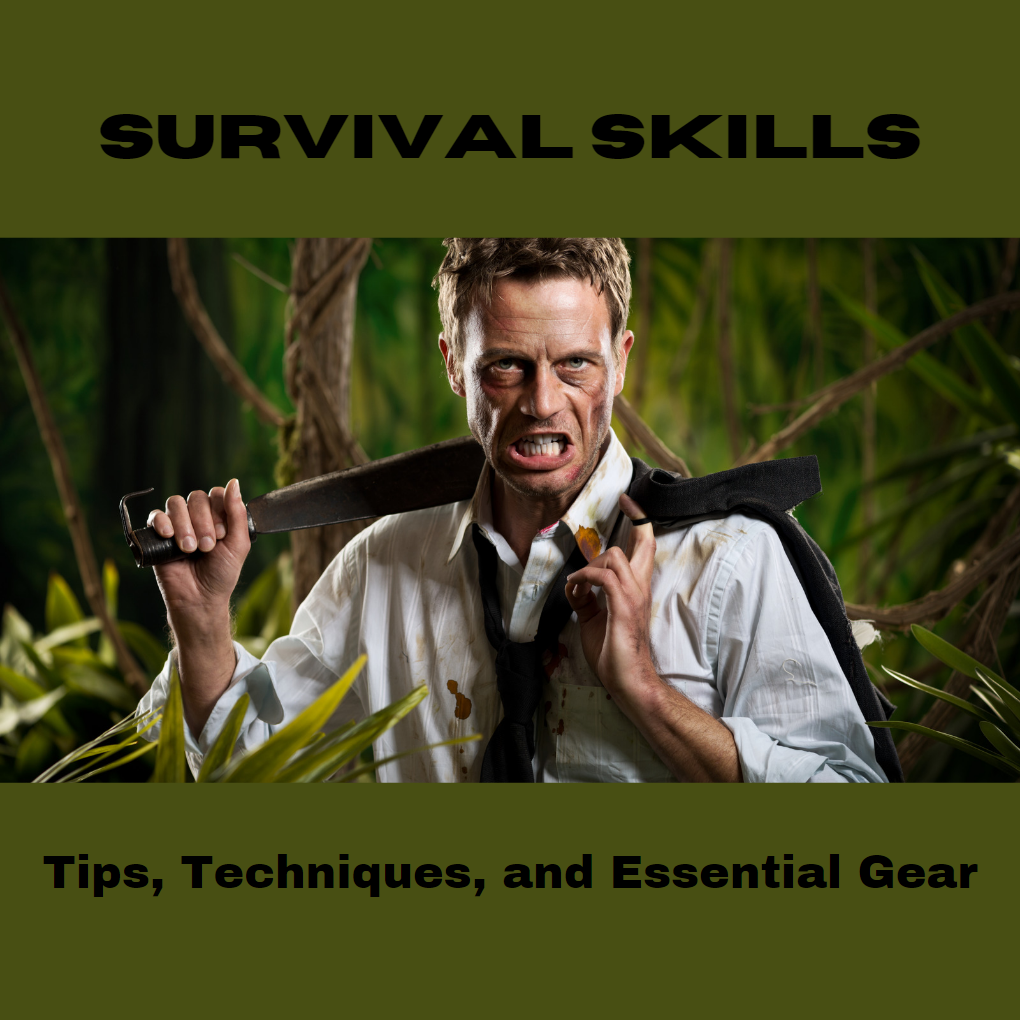The Ultimate Guide to Basic Wilderness Survival Skills: Tips, Techniques, and Essential Gear

The Ultimate Guide to Basic Wilderness Survival Skills: Tips, Techniques, and Essential Gear
When it comes to outdoor adventures, few things are as exhilarating as venturing into the wilderness on a backpacking or camping trip. However, even the most experienced outdoor enthusiasts can find themselves in unexpected situations where basic wilderness survival skills become essential for staying safe and alive. Whether you're planning a short hike or an extended backpacking trip, it's essential to have a basic understanding of wilderness survival skills and techniques.
In this guide, we'll cover the essential skills, gear, and mindset needed to survive in the wilderness. Whether you're a beginner or an experienced outdoorsman, you'll find valuable information and tips to help you stay safe and confident in the great outdoors.
Understanding Basic Wilderness Survival Skills
The first step in preparing for any outdoor adventure is understanding what basic wilderness survival skills are and why they are important. At its core, wilderness survival is the art of staying alive and healthy in an environment that is unfamiliar, unpredictable, and potentially dangerous. The ability to survive in the wilderness depends on a combination of knowledge, skills, and the right mindset.
Basic wilderness survival skills include:
- Finding and purifying water
- Building a shelter
- Starting a fire
- Foraging for food
- Signaling for rescue
While advanced survival skills like hunting, trapping, and navigation are certainly valuable, they are not as essential as the basic skills listed above. When it comes to wilderness survival, it's important to focus on the most critical skills that can make the difference between life and death.
Essential Wilderness Survival Gear
In addition to basic wilderness survival skills, having the right gear is essential for staying safe and comfortable in the wilderness. Here are some of the most essential items to include in your wilderness survival kit:
Clothing: Dressing in layers is essential for staying comfortable and protected in the wilderness. Be sure to include waterproof and windproof clothing, as well as sturdy boots, gloves, and a hat.
Shelter: Whether you're planning to camp or just go for a day hike, having a shelter is essential for staying safe and comfortable in the wilderness. A tent, tarp, or bivy sack can provide protection from the elements.
Fire-making tools: Fire can be essential for keeping warm, cooking food, and signaling for rescue. Be sure to pack waterproof matches or a lighter, as well as fire-starting materials like tinder and kindling.
Water filtration systems: Access to clean drinking water is essential for survival in the wilderness. While you can carry water with you, it's often more practical to bring a portable water filtration system or purification tablets.
Knives and multi-tools: A good quality knife or multi-tool is essential for a variety of wilderness survival tasks, including cutting rope, preparing food, and building shelter.
Navigation tools: A map and compass can be essential for navigating in the wilderness. Be sure to also pack a GPS device and extra batteries.
Basic Wilderness Survival Techniques
Now that you have an understanding of basic wilderness survival skills and the essential gear needed to survive, it's time to focus on some of the most critical techniques for staying alive in the wilderness.
Finding and purifying water: In the wilderness, finding a source of clean water is essential for survival. Be sure to look for flowing water sources like streams and rivers, and use a portable water filtration system or purification tablets to make the water safe to drink.
Building a shelter: A good shelter can protect you from the elements, keep you warm, and provide a sense of security. A simple lean-to or tarp shelter can be constructed using natural materials like branches and leaves.
After finding or building a shelter, the next step in basic wilderness survival skills is to find and purify water. This is crucial because humans can only survive three to four days without water.
The first step in finding water is to look for obvious sources such as rivers, streams, and lakes. However, if you're in a particularly dry or arid region, you may need to look for other sources such as springs, or even underground streams. You can often find these by looking for signs of vegetation, as plants require water to grow.
If you're unable to find a natural water source, you can collect rainwater by using a container such as a tarp, poncho or even a large leaf to collect the water as it falls. You can also dig a hole in the ground and line it with a plastic sheet to collect any groundwater. Be sure to purify any collected water by boiling it or using a portable water filter to remove any harmful bacteria or viruses.
In addition to finding water, it's also important to know how to find and prepare food. Foraging for wild edibles and hunting are both options, but it's important to know which plants and animals are safe to eat.
Some safe plants to forage include berries, nuts, and wild greens such as dandelion, plantain, and chickweed. It's also important to be able to identify poisonous plants such as poison ivy and poison oak, which can cause rashes and other health problems.
When it comes to hunting, it's important to know how to properly set traps and snares. This involves understanding animal behavior and knowing where to place the traps. It's also important to know how to properly prepare and cook any caught animals to ensure they are safe to eat.
In addition to these basic wilderness survival skills, it's important to always be prepared by carrying a survival kit with you. This should include items such as a knife, Firestarter, compass, and first-aid kit.
In conclusion, basic wilderness survival skills are crucial for anyone who plans on spending time in the great outdoors. By knowing how to build a shelter, find and purify water, and find and prepare food, you can increase your chances of surviving in an emergency situation. Remember to always be prepared and carry a survival kit with you, and most importantly, stay calm and focused in any survival situation.


